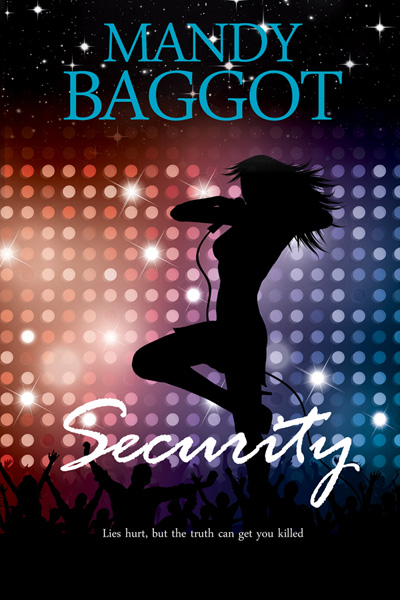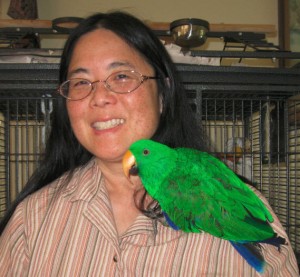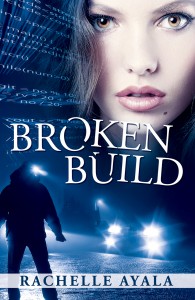I’m so happy to have Stephanie Keyes back on my blog! This time she’s here to talk about my favorite topic: Romance! Welcome back, Stephanie!
Hello and thank you to Bonnie for having me on her blog today! I thought it might be nice to talk a little bit about the romance aspect of my new release The Star Child. After all, even though the journey that Kellen and Calienta take in the book is center stage, the romance is always there, building.
I call this piece skeptic’s take on romance, because I’m not someone who is easily won over. Skeptic doesn’t even begin to cover it with me. In fact, before we started dating, I thought my husband lied to me about his birthday being the same days as mine. Yes, I did make him show I.D and yes, it is the same day.
With that backdrop in mind, here’s my take on romance:
Be sincere: Don’t create a portfolio of romantic expressions to be whipped out at a moment’s notice. If you say something that you don’t mean, then your friend/partner/spouse will know it.
Many years ago, I was working a part-time in college and I missed my boyfriend (now the enigmatic Mr. Keyes) so much. The next moment, I received a fax of a clip art rose, with the expression, “a rose for you my love”.
Corny? Definitely. However, it so perfectly made a connection that I needed at that time. I still have the fax sixteen years later. Fortunately, Mr. Keyes’ poetic expressions have improved. [Smiling]
Find Humor In Everything: Let’s face it. Life is hectic and it’s boring at times, even when you’re on the run through Faerie, getting chased by a pack of Hellhounds. If you can’t laugh at yourselves in a relationship, then where’s the fun, the passion in it?
My husband sends me ridiculous texts and tweets throughout the day. What’s interesting about this is that we both work from home, so we are only ever one floor away from one another. I spend the entire day laughing. Particularly when the jokes are bad.
Romance Is Free.
Being romantic doesn’t cost a thing. Leave a love note for the person that you care about, send them a song that touches you, and tell them what a kind person they are. The list goes on and on.
Sometimes, even motivating your significant other can be romantic. One morning I did just that. I set up the coffee pot for my husband who had worked all night. I left a note by the pot that read “Just Press On”. I intended the Post-it as a brief set of instructions; he thought it was a motivational message.
Here’s to hoping any skeptics out there (like me) find some real-life romance. Thanks for having me on your wonderful site today! Please check out The Star Child from Inkspell Publishing!
About the Book
The world is about to be cloaked in darkness.
Only one can stop the night.
Kellen St. James has spent his entire life being overlooked as an unwanted, ordinary, slightly geeky kid. That is until a beautiful girl, one who has haunted his dreams for the past eleven years of his life, shows up spinning
tales of a prophecy. Not just any old prophecy either, but one in which Kellen plays a key role.
Suddenly, Kellen finds himself on the run through a Celtic underworld of faeries and demons, angels and gods, not to mention a really ticked off pack of hellhounds, all in order to save the world from darkness. But will they make it in time?
About the Author
Stephanie Keyes holds an undergraduate degree in Management Information Systems as well as a Master’s in Education. A seasoned, facilitator, Mrs. Keyes worked in Training and Development for an international telecommunications corporation for twelve years; spending the first eight years of her career as a Software Trainer and Technical Writer and the last four working in Human Resources and Employee Development.
In May of 2012, Mrs. Keyes left the corporate world to focus on her family and her writing full-time. She also operates a freelance graphic and instructional design business, Sycamore Road Design.
Inkspell Publishing will release her first novel, The Star Child, on September 21, 2012. She is now currently at work on the second book in The Star Child Trilogy, The Fallen Stars.
Keyes lives in Pennsylvania with her husband, two children, and Riley the dog.
Contact Stephanie
Website: www.stephaniekeyes.com
Facebook:http://www.facebook.com/pages/Stephanie-Keyes/150860604966160
Twitter: www.twitter.com/StephanieKeyes
Before Bond, meet Regan…Nathan Regan
The new Bond film, Skyfall launches tomorrow – but why wait until then for a military intelligence hottie? Let me introduce you to the lead male in Mandy Baggot’s new romantic thriller, Security and reveal the eye-catching 007-style book cover!
Lies hurt, but the truth can get you killed
Autumn Raine is a pop vocalist at the very top of her game. She’s a style icon, the paparazzi’s darling and everyone wants to be her friend. But when her safety is threatened, her whole life starts to unravel.
Enter Nathan Regan, an ex-elite soldier who is assigned to protect her. He’s a good man doing bad things but what drives him? Passion? Madness? Or grief? Demons from his past are threatening to consume him. Can he win the fight alone or will he have to admit he needs help?
As the threat deepens, Autumn starts to find out who she really needs in her life. Is there still room for personal assistant Janey or rapper boyfriend Rockweiler? When everyone around her is feeding her lies, how does she work out the truth? Does her record producer know more than he’s letting on? What is her mother, the British Foreign Secretary’s involvement in the situation? And can Autumn put her faith in a forty-something Jamaican woman who handles an automatic weapon as expertly as she cooks?
Eluding kidnap and trying to stay alive, can Autumn find the strength to be the person she longs to be? And can two people, poles apart, forge something strong enough to survive anything?
Security is coming from Sapphire Star Publishing on 4 April 2013! If you can’t wait until then to find out more here is the link to the teasing trailer!
http://www.youtube.com/watch?v=tV3_X9MOamo
Find out more about Mandy’s books at www.mandybaggot.webs.com or check out her author page with Sapphire Star Publishing http://www.sapphirestarpublishing.com/mandybaggot
Collect the Bond film titles and WIN a signed paperback copy of Strings Attached!
FIVE paperback copies of Mandy’s novel Strings Attached are up for grabs! All you have to do is collect the Bond films. On each of the websites featuring the Security cover reveal there will be Bond film mentioned (NOT Skyfall). Once you have all the titles, drop Mandy an email mandybaggot@sapphirestarpublishing.com and you will go into the draw for one of the books! Easy! Here are the website links you need!
Contest closes November 1, 2012
I am so excited to have my friend and colleague Nicky Wells on my blog today! She’s the author of a rock star trilogy (Romance that Rocks Your World!) and this month she launches the first installment, Sophie’s Turn, with her new publisher Sapphire Star. Today she tells us why she chose plotting over pantsing as her writing style (I totally agree with you there, Nicky!) But first a little bit about Sophie’s Turn:
Slapper. Slut. Adulteress. These are hardly words that Sophie Penhalligan would normally use to describe herself. Yet this is exactly how she is behaving, all things considered, even if she isn’t quite married to Tim yet. And it’s all happening because her past is coming to tempt her! Nine years ago, she met her teenage idol and rock star extraordinaire, Dan, up close and personal. Well, almost. Now Dan has crash-landed back in her life. How could Tim ever stand a chance against the charming, handsome singer? How could she?
Sophie, now twenty-eight and a budding newspaper journalist, is happily embroiled in a relationship with Tim, her boyfriend of two years. Until recently, she was confident that Tim would eventually propose—probably as soon as he could get his act together. But just as Tim’s persistent inaction is beginning to cast a cloud over their relationship, Dan’s sudden reappearance turns Sophie’s world upside down. Thus unfolds a roller-coaster of events including an ill-fated trip to Paris with Tim, a night of unfulfilled romance with Dan, Sophie and Tim’s engagement party gate-crashed by Dan, and Sophie’s professional secondment to accompany Dan’s band on their revival tour—at Dan’s special request and very much against her will.
And then, one fine day in Paris, Sophie suddenly finds herself engaged to Dan while her erstwhile fiancé Tim is… well, doing whatever it is Tim does back in London. What is she to do now? Who wouldn’t give anything to meet their favorite star, let alone marry him?
Find out how Sophie gets into this impossible situation, and how she turns it around, in Sophie’s Turn, the honest, funny and sometimes bittersweet story of one woman’s entanglement with a rock star.
Now Nicky shares her not-so-rare plotting disorder with us!
I suffer from Compulsive-Obsessive Plotting Disorder
Yup, that would be me. I’m a compulsive, obsessive plotter. I plot the plot, then I plot it again, then I re-plot and then, just to be absolutely certain, I plot once again. Lost the plot yet? I don’t blame you!
Let me step back a little.
Plot. What a peculiar word. I remember hearing it for the very first time. I was in secondary school and had elected English as one of my major, A-Level courses. Bear in mind this was in Germany, and we were all working in English as a second language. I believe it was Macbeth that prompted my introduction to ‘plot’. Suddenly, there it was, this word, plot. It was everywhere, and I didn’t have a clue what it meant. By way of bizarre association, it made me think of apple stew. You know, apple compote. Apple complot.
The teacher tried her hardest but the meaning was elusive to me, somehow. If she’d used some inventive imagery—for example, the plot is your red threat, your guiding line, your string of pearls—I might have got it sooner. As it was, it took me a good while to figure out what a plot was.
However, once I’d grasped the concept, I never looked back. I’ve discovered that I’m a ruthless plotter. I tried pantsing, once, but I didn’t like it. The chaos and the uncertainty wasn’t for me, and all the effort involved in going back and making sure I got my chronology right was just too much.
So now, I plot. As threatened above, I plot in four stages.
Stage #1 is the core idea, the guiding principle, the ‘nugget’ of the story. Take Sophie’s Turn, for example. Here, the ‘nugget’ is that she wants to marry the rock star, but she’s already engaged.
Stage #2 is the handwritten plot. I nick the kids’ roll of paper off their easel and measure out roughly the length of the dining room table. I draw a loooooong line across, and write the beginning and end points at… the beginning and end, doh. Sorry, that was obvious! That accomplished, I know where to start and where I’ll finish, so I map out how I get there. Events that I’m certain will take place I write straight onto the plot line in roughly the right place. The rest gets populated with multi-colored sticky notes, which also help to raise questions, mark subplots, or flag contradictions.
Stage #3 is the word-processed plot-chart. This involves putting the rather large and unwieldy handwritten plot into Word, using block arrows for sections or chapters, and plenty of bullet points to flesh out each stage. There is a certain firming up of ideas, and some initial research that takes place at this point, and I typically get that tingling feeling that means the book will be written.
Stage #4 is my master outline. Here, I take each one of the individual sections represented by a block arrow and really develop it. I create a one-page synopsis for each segment of the narrative, with a large space in the margin for research notes, character description or anything else (“note to self: don’t forget to let Sophie chose her own dinner in Chapter 32”) that will help me write. When that is done, I usually have between 20 and 30 pages of ‘summaries’ which constitute my detailed plot outline, or crib sheets. When I write, this is what I refer to.
It’s quite handy, this process. It means once I’ve got to Stage 4, I’ve usually resolved major conflicts and have the plot firmly embedded in my head. It also enables me to write in short sharp bursts, as and when family life and other commitments allow me to, without getting lost or confused in my own narrative.
Now, then, you ask, do I ever deviate from the plot I’ve so meticulously plotted? Of course I do; or rather, my characters do it for me. They’re a bit pesky like that, always coming up with their own ideas, their own ways of doing something. Usually, I let them run and eventually find they fall in line, resuming the plot as previously planned by their creator. Very occasionally (and notably so in Sophie’s Turn), they will force me to reconsider or adjust certain elements (significant ones, too, like the ending!). But do you know what? Even that I find much easier after all that plotting, because at least I know what course I am diverging from.
See, I am compulsive obsessive. How about you?
About Nicky Wells: Romance that Rocks Your World!
Rock On! Nicky Wells writes fun and glamorous contemporary romance featuring a rock star and the girl next door. She recently signed her work with U.S. publisher, Sapphire Star Publishing. Nicky loves rock music, dancing, and eating lobsters. When she’s not writing, Nicky is a wife, mother, and occasional teaching assistant.
Originally born in Germany, Nicky moved to the United Kingdom in 1993, and currently lives in Lincoln with her husband and their two boys. In a previous professional life, Nicky worked as a researcher and project manager for an international Human Resources research firm based in London and Washington, D.C.
Visit Nicky on her blog where you can find articles, interviews, radio interviews and, of course, an ongoing update on her work in progress, the second and third parts of the Rock Star Romance Trilogy. You can also follow Nicky on Twitter and find her on Facebook. Nicky is a featured author on the innovative reader/author project, loveahappyending.com and has joined the Romantic Novelists’ Association. Nicky also has author pages at Sapphire Star Publishing and, of course, Goodreads.
Great information and advice, Nicky! Thanks so much for visiting my blog!
Are you experiencing a second book slump? My friend, colleague and talented author Rachelle Ayala has some great ideas to pull you out of it! Take it away Rachelle!
The first book, like a first baby, is a magical and thrilling experience. Whether you’ve announced it to your family, or secretly tapped the keys on your laptop, the beginning was full of wonderful firsts. From the first line to the first critique partner, to the first finished draft and the first customer. Everything was new and exciting. The first 5-star review! The first 1-star. The first interview and the first royalty check.
Expectations have been set and now you eagerly, or maybe reluctantly, begin book #2. Here are five ways to avoid the dreaded sophomore slump or the paralysis that can creep into the process of releasing the second book.
1. Divorce your first book. The first book was a process of discovery. You’ve lived in your first book for years, perfecting it and polishing it until the characters and scenes became a part of your life. You were able to explore different angles, perhaps take the plot in an unforeseen way. Without any deadlines, you became immersed in your characters’ lives. Now, with a second book, you find it hard to see how you can become as close or attached to the characters and plot as you did before.
As harsh as it might seem, the best thing for you to do is to divorce your characters or slay them in your mind. They are done with. Gone. There is nothing you can do to change their outcome. They’ve gone to that happy land across the great divide. The same holds true to the plot of your first book. Yes, you might have a better ending, or a more clever twist. Let it go.
Even if you are writing a series, the static ending of the first book must not impinge on the life of your second book. The most important is to let the second book of the series breathe on its own, and that means giving it a fresh start independent of the first book. Take it in a new direction by forgetting the first book.
2. Stop looking over your shoulder. Now that you’ve published, you are keenly aware of such things as sales ranks, release cycles, and what other authors are doing. Perhaps you’ve joined a writer’s group to share successes and support each other in marketing and sales. Someone in your group pushes out a new book, another writer reached a new ranking, and a third one wrote five thousand words a day and is finished with her next draft.
Take a deep breath. You’re not in competition with your fellow writers. The writing business is a marathon, not a sprint. Think of how much time you took to develop the characters of your first book, to become embedded into the setting, to spin the plot. Do not shortchange the second book by speed-dating it out the door before it is ready. Remember, everyone has his or her own pace. Nurture yours and be happy for those around you. They have their good days and bad, and so do you.
3. Push aside procrastination. When you wrote your first book, you were happily carefree from responsibilities such as marketing, social networking and managing the business side of writing. Your mind was wrapped around the intricacies of scene development and your thorniest problems were how to get out of a plot hole or ensuring enough emotion in a critical scene.
With the second book, unfortunately, distractions abound. You’re busy with blog tours, interviews, tweeting and engaging your readers. Marketing such as giveaways and book signing eat up your time. A day can quickly go by, and another, then a week where you have not touched nor handled your second book, much less given a thought to the characters or heard from them, for that matter!
I’m not good at practicing what I’m about to preach, especially since I love social networking, emailing and online chatting. But, IF you’re going to have a second book, you must force yourself to shut off the Internet, sit in front of your laptop or pad of paper and write!
4. Bury Expectations. Ah, the monster of high expectations. Now that your first book is out and perhaps receiving rave or not so rave reviews, you feel the heightened pressure of making your second book better than the first. Perhaps readers are eagerly waiting, or reviewers are panning your book. Either way, you are determined not to make the same mistakes of your first book.
Your first book was neither as great or as horrible as you think. Some readers who loved your first book will hate your second book. Maybe some others might love it better. You cannot control people’s responses to your books. Yes, the pressure is higher if you’re especially successful. People might be breathing down your neck to read your next book, or maybe they are waiting for you to fail. Perhaps you feel that competitors are jealously nipping at your heels while fans are worried whether you can deliver. Yes, even positive expectations can produce anxiety. But tough noogies. You must ignore these expectations and work on what you can control, your second book.
5. Write for Yourself. You’ve read the reviews, both good and bad, and been inundated with well-meaning advice. You know that Christians hate sex scenes, but that’s all your characters seem to want to do. Your topic is about a sensitive racial, religious, or social issue. And horrors, you wonder what would happen if either your father’s golfing buddies or your mother-in-law’s yoga group were to read your book. Your husband tells you to write sci-fi, and your son says nobody wants to read about a loser (he meant your character, but you can’t help thinking he’s talking about the author). Now that word is out among your non-writing family and friends that you’re an author, everyone has suddenly become a writing critic.
While you can’t bury yourself in an igloo and hibernate, you can remind yourself that you’re the author and your characters will damn well do as they please, not what your mother wants, or your best critique partner suggests, or even the all holy genre rules demand.
Every writer does need feedback. But it should be taken on your terms, not someone else’s. Your book is your vision.
Some practical steps on how to receive feedback without paralysis are: 1) resist the urge to talk about your unformed book. There’s a reason God tucks a baby inside the mother’s womb for nine months so he/she can develop in privacy. 2) Write the first draft as if no one will ever see it. Tell yourself you will toss it all or that it will no doubt be completely revised. 3) Politely think for every person who gives you unsolicited advice that they should go ahead and write their own book. Who knows? They might have the next blockbuster. 4) When you’re ready, encourage your critique partners to hit you between the eyes with everything they don’t like about your book. Let it all sink in, but do not change anything. Read and absorb their crits and let it fallow or fester. 5) Work on your next revision without looking at crits. The changes you make are now yours, even if it had originally been suggested by someone else. The fact that you incorporated it organically, rather than looked through a checklist of who-said-what meant that the final product is yours. You will be stronger and more assured that you took the right direction, but most importantly, you own the story and you were true to yourself.
So get out there and swing for the fences. You can and will successfully finish your second book and avoid the sophomore slump. I’ve heard there’s a third book bounce. So every step you take to push out your second book makes you that much closer to the nirvana of book number three.
What about you? Have you finished a book and are now working on a second book? Do you feel differently about your second book? Please leave a comment.
Rachelle Ayala recently published her second novel, Broken Build (Silicon Valley Romantic Suspense). It is available at Amazon.
Rachelle Ayala’s Blog: http://www.rachelleayala.com
Facebook: http://www.facebook.com/rachelleayalawriter
Twitter: http://twitter.com/AyalaRachelle



















